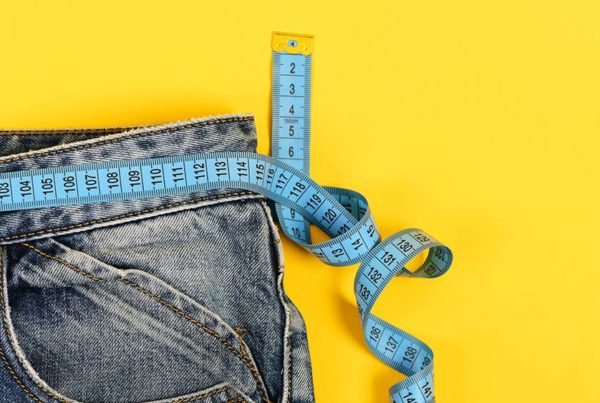FIRST IN A SERIES OF ARTICLES
Humans are sexual beings. Sex is obviously how we have evolved through the process of procreation. But the pleasures of sex are also an important aspect of life and intricately related to health and fitness.
Most people know this, as sex is often on their mind although it’s usually not part of normal conversation for most individuals. Instead, when discussions about sex come up, they’re usually related to prevention of pregnancy or sexually transmitted diseases and the use of condoms.
Throughout my years in practice, I’d list the following question on the health survey for adult patients: “Is your sexual desire reduced or lacking?” A large number would answer yes. Based on my own assessments, very few of these patients appeared to have deep-rooted psychological problems, so that meant that their sexual apathy was related to fatigue, metabolic imbalance, stress, and other physiological factors.
Yet a positive by-product of improving one’s overall wellbeing is a better sex life. And a better sex life also translates into better health and fitness. It’s a win-win scenario.
So what do we really mean by the term “healthy sex”? At which age? Duration or frequency of intercourse? Number of children resulting from procreation? Number of sexual partners in one’s lifetime? Monogamy? Fantasy role-playing? And what about bisexuality and homosexuality? While a healthy and fit adult human is biologically primed for regular sexual activity, studies show that majority of men and women after age twenty-nine have considerably less sex with each passing year.
The data in the chart below was compiled from individuals with “active” sex lives—surveys of those engaged in intercourse during the previous month. The published study was performed by a group of scientists at Indiana University and appeared in the Journal of Sex Medicine in 2010.
“People are often curious about others’ sex lives,” said Dr. Debby Herbenick, one author of the study. “They want to know how often men and women in different age groups have sex, the types of sex they engage in, and whether they are enjoying it or experiencing sexual difficulties. Our data provide answers to these common sex questions.”
Percent of men and women in different age groups engaged in active sex.
Age 18–19: 31% Men, 43% Women
Age 20–24: 52% Men, 62% Women
Age 25–29: 74% Men, 74% Women
Age 30–39: 71% Men, 64% Women
Age 40–49: 61% Men, 56% Women
Age 50–59: 44% Men, 40% Women
Age 60–69: 39% Men, 29% Women
Age 70-plus: 28% Men, 12% Women
Perhaps the two most frequent causes of reduced sex, or the lack of it, are hormonal imbalance and stress—both can adversely affect the entire sexual act from arousal through orgasm. Poor aerobic function and physical pain are also causative factors. For most people, addressing the cause of the problem is the first step to a better sex life. As health increases, more interest and opportunities for having sex, and an easier ability to engage in it, typically follow.
The overfat epidemic has also affected sexual habits of both men and women. In general, studies show that overweight individuals have significantly less sex.
Overall, healthy individuals not only have more sex but also better quality sexual encounters. By engaging in activities that vary their sexual positions, for example, couples can increase pleasure and chances of one or more orgasm, especially in women, and reduce or eliminate discomfort. Various positions also help stimulate the brain with more sensory experiences—including sight, scent, taste, sound, and feel—that improve the pleasures of sex. The lack of sight—closing your eyes—can also enhance the sensual pleasures of sex because, without having to devote significant energy for the brain’s vast vision centers, it can focus more on feeling through touch and other senses. (This is why many people close their eyes during sex, but it also works with other activities such as playing or listening to music or trying to imagine something abstract.)
All these factors help individuals enjoy and desire sex, reduce inhibition associated with past sexual failures, and increase ease of orgasm, an obvious end-result of sexual activity for both partners. Research shows that sex without orgasm is not only unsatisfying, but may even negatively affect one’s health.
In 2002, the World Health Organization (WHO) described sexual health as “a state of physical, emotional, mental and social well-being related to sexuality; it is not merely the absence of disease, dysfunction or infirmity. Sexual health requires a positive and respectful approach to sexuality and sexual responses, as well as the possibility of having pleasurable and safe sexual experiences, free of coercion, discrimination and violence.” While this is a safe statement on sex, I would add that people should be free to decide just how they want to enjoy the pleasures of healthy sex.
The sex study discussed above is part of a long history of such research. In the next article, I’ll highlight the women who dared to break the sex barrier and not only study sex but write about it in detail, along with men who have researched the topic too. Following that article, I’ll discuss the physiological benefits of sex and how they directly affect our health and fitness.
For a detailed discussion of stress, hormone imbalance, aerobic function and other items discussed in this article, see the 5th edition of In Fitness and In Health
Read the following articles
Healthy Sex Part 2
Healthy Sex Part 3








